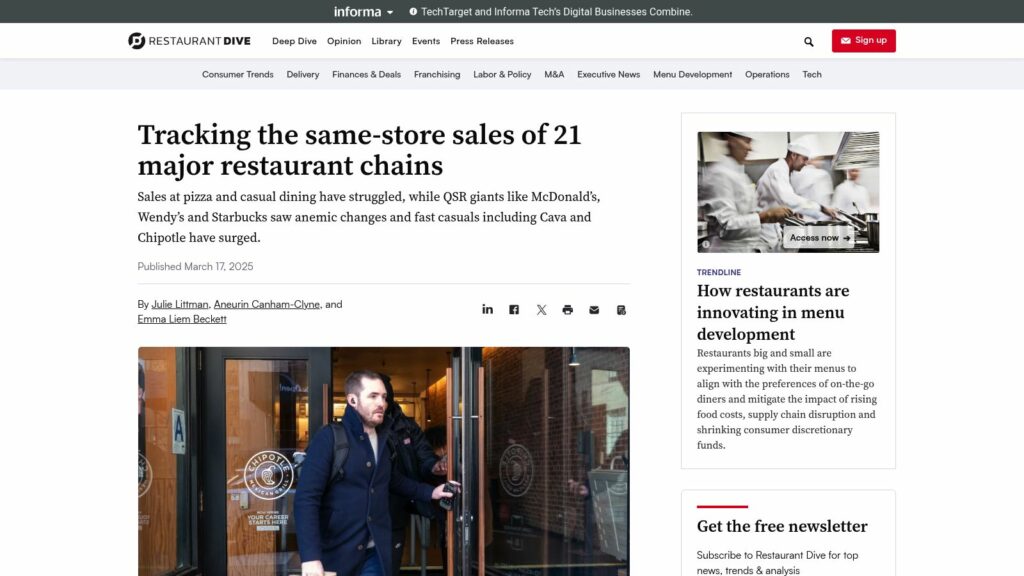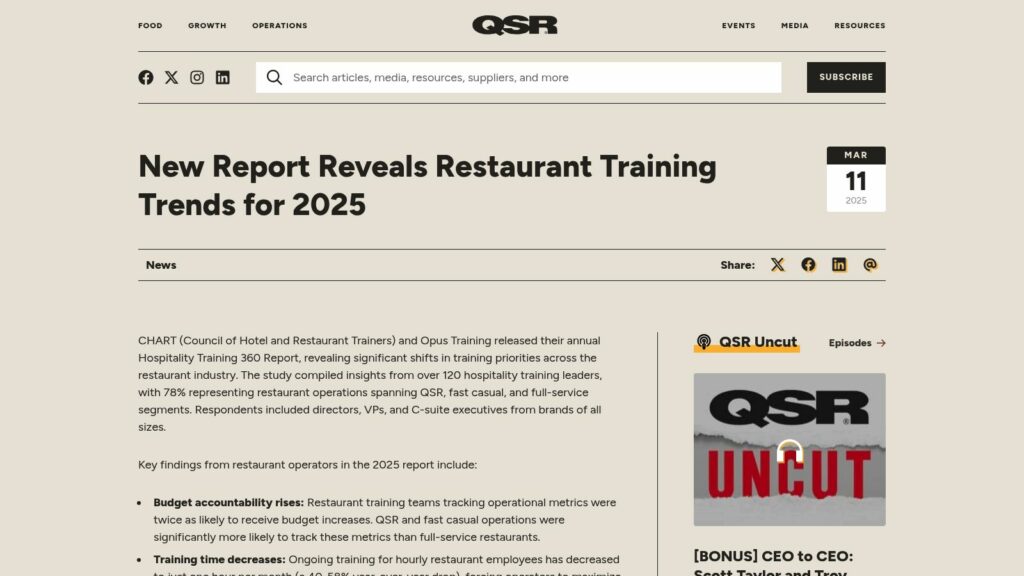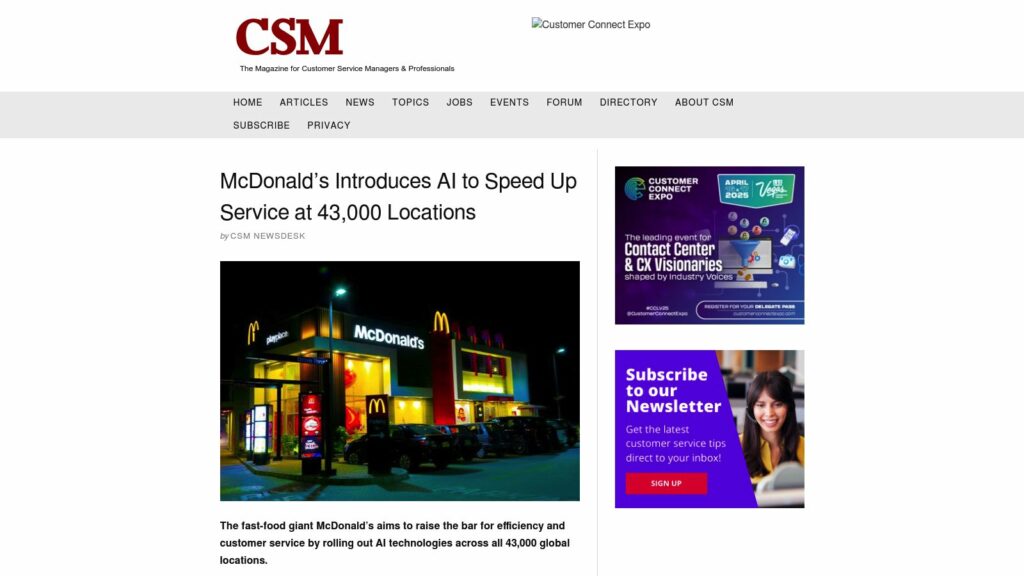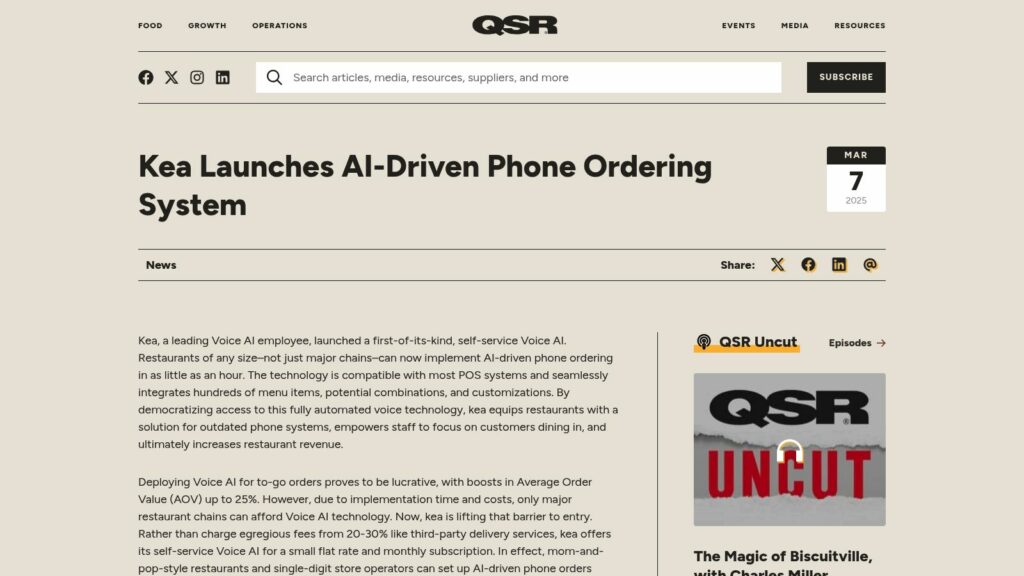Tracking the Same-store Sales of 21 Major Restaurant Chains
Same-store sales analysis for 21 restaurant chains shows casual dining and pizza struggling, while QSRs like McDonald's and Wendy's have mixed results. Fast casuals like Cava and Chipotle thrive. Chili's reports 31% growth due to value-focused marketing, while chains like Applebee’s and Olive Garden face sales declines. Innovations and remodeling strategies are being employed across the sector to improve performance.
https://www.restaurantdive.com/news/tracking-same-store-sales-21-major-restaurant-chains/742371/








